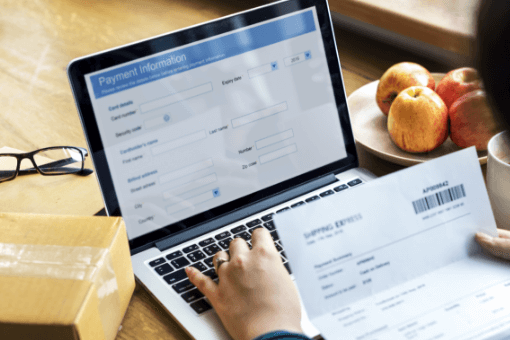Invoicing is more than just a formality—it’s the foundation of smooth financial transactions between your business and its clients. A well-structured invoice with clear payment terms sets the tone for timely payments, reduces misunderstandings, and keeps your cash flow steady. But crafting an effective invoice isn’t always straightforward.
This guide is here to make it easy. We’ll walk you through the importance of payment terms, share sample invoice formats, and break down how to include essential details that make invoicing stress-free and efficient. By the end, you’ll have everything you need to create invoices that work for your business.
What are Payment Terms & Why They Matter
Payment terms are the rules that set the expectations for when and how clients pay. They protect your business, ensure clients know what’s expected, and help avoid misunderstandings.
Laying terms and conditions in your invoices, you set for smooth, professional, and timely transactions. Think of them as the agreement that keeps everyone on the same page.
Here’s why they’re so important:
- Clarity for Everyone
When your terms are clear, clients don’t have to guess when payments are due or what happens if they’re late. - Timely Payments
With deadlines, clients are more likely to stick to a schedule. Add late fees, and you’re giving them extra motivation. - Cash Flow You Can Count On
Regular payments keep your business running smoothly. Terms like “Net 30” give you a predictable flow of income. - Better Client Relationships
Clear communication builds trust. When clients understand your payment terms upfront, it reduces the chance of misunderstandings.
“Learn more about simplifying your invoice payments!”
Quick Examples of Sample Invoice with Payment Terms

Let’s start with 2 example to illustrate the basics.
Example 1 –Here’s a sample invoice format with payment terms for a fictional service business:
| Item | Details |
| Invoice Number: | INV-10245 |
| Invoice Date: | 11/13/2024 |
| Due Date: | 12/13/2024 |
| Billing To: | ABC Corporation |
| Service Provided: | Monthly Marketing Consultation |
| Amount Due: | $2,500 |
| Payment Terms: | Net 30 – Payment due within 30 days |
| Late Fee: | 2% interest applied if payment is late |
| Discount for Early Payment: | 2% discount if paid within 10 days |
| Accepted Payment Methods: | Bank Transfer, Credit Card, PayPal |
| Notes: | Please make checks payable to XYZ LLC. |
Example 2 : Here is an example of simple invoice with key payment terms included :
| Invoice |
| Invoice Number: #001234 |
| Date: [Insert Date] |
| Due Date: [Insert Due Date, e.g., 30 days from invoice date] |
| Bill To: [Client Name and Contact Information] |
| Description |
| Product/Service A |
| Product/Service B |
| Total |
| Subtotal |
| Tax |
| Total Amount Due |
| Payment Terms: Due within 30 days of the invoice date. A late fee of 2% applies after 45 days. |
| Payment Method: Bank Transfer, PayPal, or Credit Card |
Both examples include clear details like due dates, payment methods, and what happens if payments are late. Simple and effective!
How to Write Important Invoice Terms and Conditions

Having clear terms and conditions on your invoice is essential. It’s how you ensure both you and your client are on the same page. When everything is laid out properly, it prevents delays, misunderstandings, and payment disputes. Here’s how to get it right:
- Invoice Date and Due Date: Always include when the invoice was created and when payment is expected. Clear due dates like “Payment is due 30 days from the invoice date” remove any confusion.
- Payment Methods: Make it easy for your clients to pay. List the payment methods you accept, whether that’s a bank transfer, credit card, or online options like PayPal.
- Late Fees: If you want clients to pay on time, set some consequences. For example, you can add a late fee, such as “2% interest for payments overdue by 15 days.” It’s a polite way to stress the importance of deadlines.
- Early Payment Discounts: If you’re open to rewarding quick payments, mention it. For example, “2% off if paid within 10 days” is a great way to encourage faster transactions.
- Contact Information: Don’t forget to include your details so clients can easily reach you with questions. Whether it’s an email address or phone number, having a contact point avoids unnecessary delays.
Internal Link Example: To read more about different types of payment terms, see our guide on Common Invoice Payment Terms.
What Are the Different Types of Invoice Terms and Conditions?
Format #1: Standard Payment Terms
Net Payment Terms:
- Net 30: Payment is due 30 days from the invoice date.
- Net 45: Payment is due 45 days from the invoice date.
- Net 60: Payment is due 60 days from the invoice date.
Early Payment Terms:
- 2/10 Net 30: A 2% discount is applied if payment is made within 10 days; otherwise, payment is due within 30 days.
Format #2: Progressive Payment Terms
Progressive Payment Terms for Project Work
When you work on projects, progressive payment terms can keep things fair and stress-free for you and your clients. These terms break payments into steps that match the project’s progress.
- Milestone Billing: You get paid after hitting key points in the project. For example, a design phase might trigger 30% payment, then 40% after testing, and the final 30% when the project is delivered.
- Partial Payment: This starts with an upfront deposit, like 20% of the total cost, and the rest is paid after the project is done.
This approach helps you maintain steady cash flow and gives your clients confidence that their money is tied to real progress.
See Also
- Understanding Different Payment Term Formats for Flexible Billing
- How to Choose the Right Payment Terms for Your Business Needs
Why Are Payment Terms and Conditions Important in an Invoice?
Adding payment terms and conditions to your invoices isn’t just helpful—it’s crucial. They set clear expectations, protect your cash flow, and reduce the risk of financial hiccups. Here’s why they matter:
- Set Clear Expectations
Payment terms outline the rules of the transaction—when the payment is due, how it can be made, and what happens if it’s late. This avoids confusion and keeps the process smooth for both you and your client. - Stabilize Cash Flow
Consistent payments are the backbone of any business. Terms like “Net 30” or installment plans make it easier to predict your revenue cycles and plan expenses without stress. - Avoid Financial Losses
Late fees or upfront payments act as safeguards. They reduce the chance of late payments piling up and causing unnecessary financial strain. - Handle Urgent Payments
For time-sensitive situations, terms like “Due on Receipt” or late fees encourage clients to act fast. This keeps your revenue flowing and avoids delays that can hurt your business.
Important Payment Terms You Need to Know

Adding specific payment terms to your invoices helps to build a consistent payment schedule with clients. Advance Payment: This means a portion of the payment is required before starting the work. It helps secure the project and covers any upfront costs.
Due on Receipt: This term ensures payment is expected as soon as the invoice is received. It’s ideal for quick transactions or immediate services.
End of Month (EOM): Payments are due by the end of the same month the invoice is sent. This is a simple and predictable option that works well for recurring invoices.
Late Fees: Late payments may come with additional charges, which encourages clients to pay on time and keeps your cash flow steady.
Installment Payments: For large projects, breaking the total amount into smaller scheduled payments makes it easier for clients to manage, while ensuring consistent revenue for you.
Examples of Payment Terms You Can Add to Your Invoice

It’s important to personalize payment terms based on the type of client and project. Here are some common examples:
- Net 15: Payment is due 15 days after the invoice date. This works well for shorter payment cycles or businesses that need quicker cash flow.
- 2%/10 Net 30: A 2% discount is offered if the invoice is paid within 10 days. If the client doesn’t take advantage of the discount, the full amount is due within 30 days.
- 50% Advance, Balance on Completion: Half of the payment is collected upfront before work begins, while the remaining balance is paid once the project is complete. This is a common choice for larger projects.
- Monthly Retainer: Payments are made at the beginning of each month for ongoing services, making it a great option for businesses with recurring agreements.
See Also
- Invoice Terminology: Understanding Key Payment Terms
- Pros and Cons of Various Payment Terms for Small Businesses
Best Practices to Consider
1. Create a Contract to Accompany Invoices
A separate contract that outlines payment terms in detail can serve as a legally binding document, making it easier to enforce terms if disputes arise.
2. Send Invoices in a Timely Fashion
Timely invoicing ensures that the client has ample time to process the payment, increasing the likelihood of receiving it by the due date.
3. Use Simple-to-Follow Language
Avoid overly complex language. Simple, straightforward terms help avoid misinterpretations, especially if the invoice is being reviewed by a non-financial client representative.
4. Don’t Miss Out on Important Details
Ensure that all critical information—such as invoice number, due date, payment methods, and terms—is clearly listed to prevent any delays due to missing information.
How Can Serina Invoice Automation Software Help with This?
Managing invoices manually can be challenging, especially as your business grows. Serina Invoice Automation software streamlines the invoicing process by automating key steps, from generating invoices to setting payment reminders. Some features include:
- Automated Invoice Generation: Generate professional invoices instantly based on pre-set templates.
- Customizable Payment Terms: Set payment terms for each client or project easily, helping maintain consistency across all invoices.
- Automated Reminders: Automatically send payment reminders to clients approaching or past due dates.
- Integration with Accounting Software: Sync with your accounting software to ensure accurate tracking and reconciliation of payments.
With Serina, businesses can streamline the invoicing process, reducing errors and improving payment times.
Frequently Asked Questions (FAQs)
How to include payment terms on an invoice?
Include payment terms in a clearly labeled section near the total amount due on the invoice. State the payment deadline, accepted methods, and any fees or discounts.
How to include payment instructions on an invoice?
Add payment instructions alongside the payment terms. Specify details for bank transfers, PayPal links, or credit card instructions to avoid delays.
What are the standard payment terms on an invoice?
Common terms include Net 30 (payment due in 30 days), Net 45, and 2/10 Net 30. These terms define the timeframe within which payment is expected.
How to write payment details on an invoice?
Under the “Payment Terms” or “Payment Details” section, include bank account information, links to payment portals, or other relevant instructions for processing payment.



